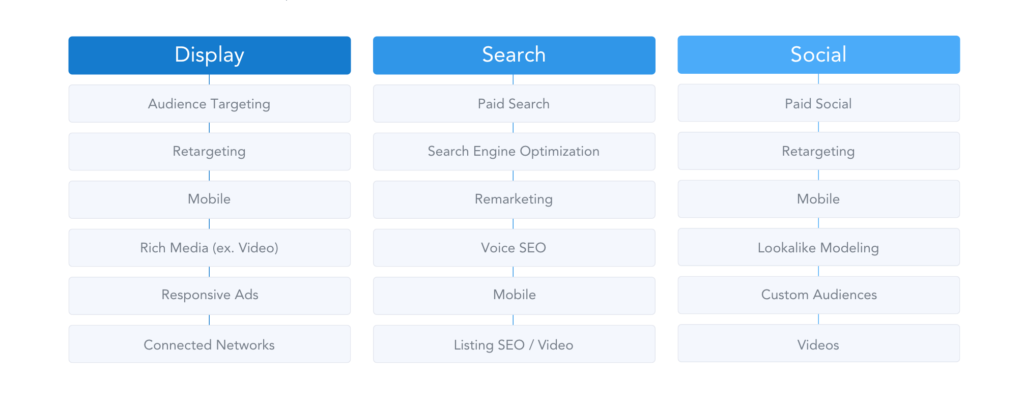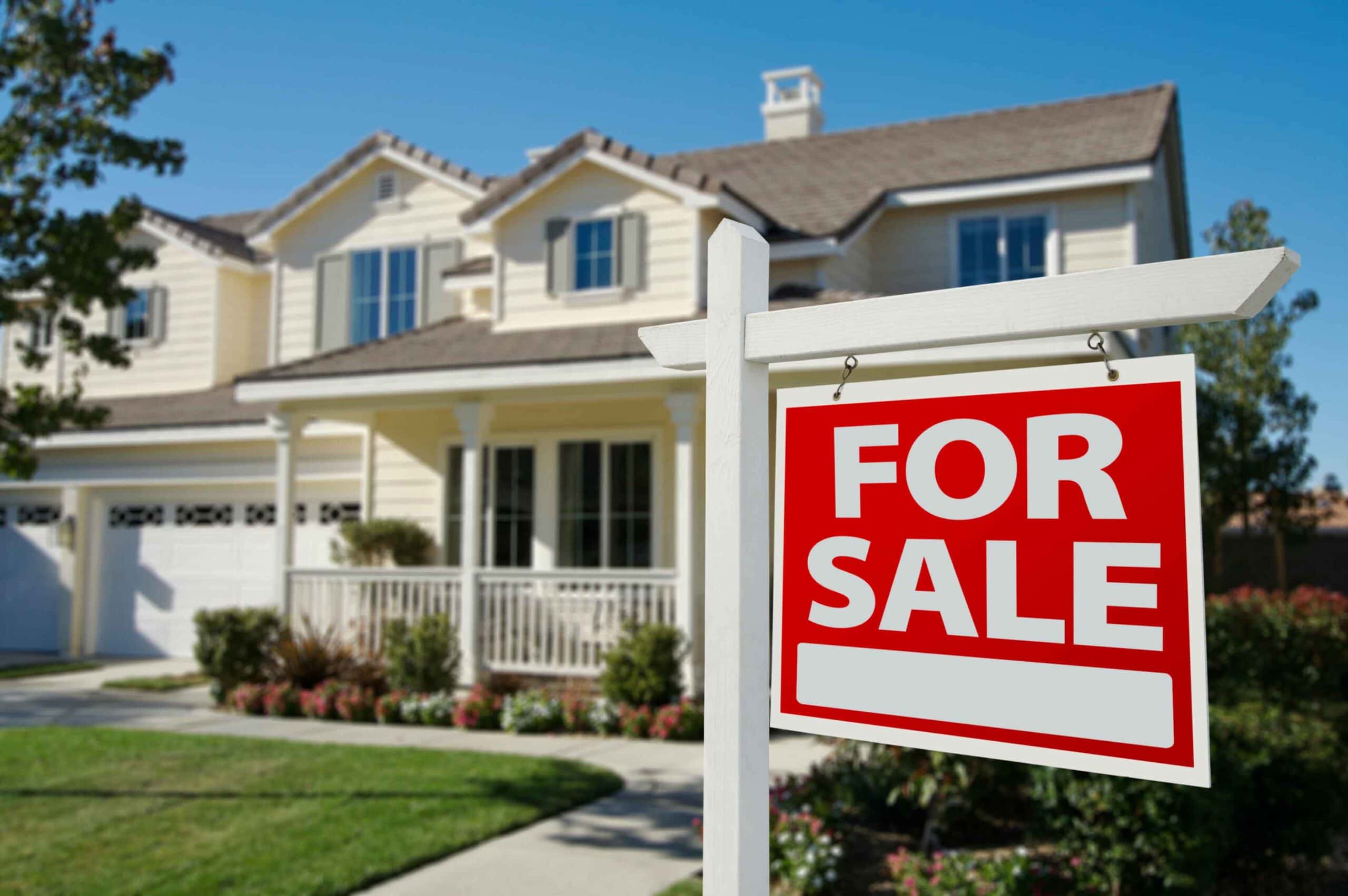How to Get More Listings Online
No matter the market, brokers, agents, and teams are always looking for new ways to get more real estate listings online. Why? Because, as many have put it over the years, it’s a “guaranteed commission” and way to maximize your earnings while potentially spending less time doing so. In a seller’s market, when demand (the number of people who want to buy) exceeds supply (the total number of houses for sale, or total inventory), buyers and sellers both benefit from working with a seasoned real estate agent who can navigate multiple offers, bidding wars, and offer details such as various contingencies or lack of contingencies.
Experienced real estate agents know that if you’re selling your home and you want to maximize your home’s selling price, it doesn’t do you any good to accept an amazing offer at 10% over asking price just to have it fall through. If you’re a buyer, you may think buying in a seller’s market is a mistake, but the reality is that you shouldn’t let the market conditions change how much you think a home is worth and how much you think you can afford, two things which a seasoned real estate agent can help you determine. Plus, in most cases, buyers don’t pay real estate agents; sellers do. So, don’t think of the market in terms of a buyer’s market or seller’s market, think of buying and selling a home as a process for which you should be as prepared as possible, getting financing in order, selecting a trusted agent to guide you through the process, and understanding your goals, such as your desired lifestyle, well before an offer is even being made, or for a seller, considered. Sellers, too, need to know what’s most important to them before they start the process of working with an agent, from the quickest time to close to maximizing their sales price.
Real estate agents would also be best served by leveraging some of the same strategies to reach potential clients regardless of whether it’s a buyer’s or a seller’s market. After all, oftentimes, a buyer is a seller, and a seller is a buyer. Also, keep in mind that even when someone is moving out of the market, agents can refer them to an agent within their network and get a referral fee, sometimes up to 40% of the commission. That said, there are several things real estate agents can do to increase seller leads and get more real estate listings online. Read on for our top ten tips to get more listings.
How to Get More Real Estate Listings Online
- Engage Your Sphere
- Market to the “Next Seller”
- Show Your Sellers How You Get Buyers
- Show, Don’t Tell, Your Expertise
- Use Analytics to Identify Potential “Hot” Prospects
- Have a Daily Routine
- Get Creative and Diversify
- Don’t Forget About Your Buyers!
- Develop Great Content
- Continue to Earn Your Customer’s Loyalty
1. Engage Your Sphere
Those who have been in the business for a while know about the value of growing and consistently nurturing your sphere of influence. Your sphere of influence (“SOI” or “sphere”) consists of the people who know you and know of you. They’re your personal and professional network; they’re your family, friends, and people you know through affiliations like school, work, church, activities, and more. Because your sphere knows you, they are more likely to listen to you and advocate for you. Put simply, your sphere of influence is your most important source of referrals and repeat business. There are several things you can do to encourage your sphere to be talking about you and referring you business, whether directly or indirectly. The mistake many make is simply putting in the time, calling, emailing, sending postcards to, and engaging with your sphere so they remember who you are. That’s crucial and what’s as important is to also give them something meaningful to talk about or do. You should be using email marketing, social media, events, and more (such as personalized thank you gifts) to stay in touch with your sphere. And you should be personalizing what you’re sending, actively having conversations, and further building your relationships with them. With email marketing, for example, instead of sending your sphere the same market updates you send everyone, create a separate campaign with interior design ideas, inspiring DIY resources, or information on local events and things to do so they can get to know their community. For social media, instead of just posting a listing photo or similar post without context, experiment with video, polls, and interactive content like stories. Make sure to respond to comments too. We’ve seen clients get hundreds of comments on fun posts that aren’t real estate related, such as posts about new year workout regimens. Agents often think very literally about how to market listings and seller services, but content that doesn’t even mention the words “listing” or “sellers” once can be far more effective in reminding your sphere – who already know you – that you’re around and available to help them with their real estate needs. It also gives them something shareable to pass along to their sphere, which grows your reach and maximizes your chances of getting your name out there in front of an equally valuable audience.
2. Market to the “Next Seller”
Leveraging digital advertising to “farm” for leads can be very effective in generating seller leads. The idea behind real estate farming is to be seen as the “go to” for a particular segment of the market, typically broken down geographically, but also sometimes demographically (such as being seen as the “downsizing expert”). In geographic real estate farming, you’d market to every single address in a given neighborhood or town, typically with content about a home you’ve sold, or are currently selling, near where they live. Farming is all about maintaining a presence so when it’s time to sell, you are the first person they think of to contact. And digital advertising can be great for creating top of mind awareness in a very similar way to traditional farming methods like door hangers, but with better visibility into results (did people react?) and the ability to personalize messaging. Campaigns can be targeted to very specific areas through radius targeting (think all homes in a specific development, neighborhood, group of neighborhoods, and/or school district). If people know you’re helping, or have helped, their neighbor sell their home, they’re more likely to see you as someone with experience in that area. In addition, people are curious about their neighbors. Far fewer people know their neighbors personally now and the concepts of “nosy neighbors” and “keeping up with the Joneses” are just as prevalent. You can leverage these concepts and digital advertising to stand out, especially if you personalize your messaging. In fact, 80% of consumers want personalization at every stage of their experience with companies. Showcase recently sold homes to people living near them or share market updates and statistics about increasing home prices in a specific area to people living there. Be present and be relevant. You’ll provide consistent brand awareness in a way that resonates emotionally so yours is the name your potential customers think of first once they are in the market to buy or sell. For more on specific tactics and channel strategies we’d recommend, such as paid search, display advertising, and social media advertising, check out this article.
3. Have a Comprehensive Strategy for Promoting Listings
Your potential sellers will want to know how you’re going to help them achieve their goals, such as maximizing their sales price, selling their home quickly, and navigating some of the hurdles that selling a home can entail. Put simply, you have to show your sellers how you get buyers. There are two primary ways to do this. One of the best ways to do this is to develop your website content to highlight all of the seller services you provide, including talking about the systems you use to attract the right buyers for their home, and to ensure you have a really great listing presentation that matches your website. Both being upfront about and being consistent with what you say are key. The other way to show your sellers how you get buyers is to actively market listings, have a really good buyer lead generation strategy, and consider including potential sellers in your target audience. Keep in mind that many sellers are also in the market to buy, so marketing to them provides two benefits. At the very least, report regularly to your sellers what you’re doing to sell their home. Sometimes a listing is primed to sell immediately, and you may already have a pipeline of interested buyers, and other times, you should be prepared to not only get the listing, but retain the listing during the time it takes to find a qualified buyer. When you’re targeting both buyers and sellers through digital advertising, search engine optimization, and other real estate lead generation strategies, really think about and measure what resonates most with them – whether it’s market stats like “Homes are selling 3x faster than ever before” or information about hot communities, think about how you can segment your audience by need and tailor what you’re saying to them to maximize the impact of your marketing. Somebody who owns a second home or investment property is going to have different needs than someone who wants to relocate to have a different lifestyle and is looking to sell their primary and only residence. The exact tactics and strategies for promoting listings will vary and may include everything from listing SEO, dynamic listing remarketing ads, and listing videos to broader company advertising, search engine optimization, and sphere marketing. Check out the below for some of the tactics we’d recommend leveraging by channel to promote your listings online, attract more and retain sellers, and find the right buyers.

4. Show, Don’t Tell, Your Expertise
It’s important that people know you’re an expert. And it’s even more important to look at how you’re talking about the value you provide. Putting a bunch of statistics up on your website about how many people you’ve helped, how many homes you’ve sold, how many awards you have, etc. is helpful in establishing credibility, and it’s nowhere near as effective as telling the story of your expertise and letting other people share in that. So, aim to do both. Go beyond the testimonial to tell your customer’s success stories. Have them really go into detail about what it was like to sell your home with you, what hurdles they encountered, and how you helped them navigate all of the bumps in the road. Don’t shy away from talking about the challenges – it’s what will build trust with people who don’t yet know you. And when it comes to your expertise, look for ways to tell the story about the impact of working with you. For example, did you know that Zillow brands its Zestimate tool as a “starting point” and actually advises potential buyers to speak with a real estate agent? It’s true, you can see their disclaimer here. Most of their Zestimates are within 20%, but if you’re selling your home, would you accept the possibility of a 20% lower selling price? Instead of talking about how you can help sellers get more for their home, talk about your experience working with people who started on Zillow, or started their buying or selling process on their own, and ended up realizing they needed an agent’s help. Stories are far more impactful than statistics or information on its own, so look to tell them wherever possible, in videos, in social media, in blogs, and in person (or through a live conversation, at least).
5. Use Analytics to Identify Potential “Hot” Prospects
There are some people who are closer to being ready to list than others. At the same time, 75% of buyers and sellers work with the first agent they contact, so you need to be reaching them first, well before they’ve decided with whom they want to work. So, it’s really important that you have a system to track your contacts, most likely through a CRM or Customer Relationship Management platform, to be able to identify where each contact is in their process. You can also lean on companies like Revaluate to provide additional data that will help you identify at which stage each contact is in their process. You need to be nurturing your entire sphere and it’s not practical, or effective, to spend the same amount of time on every contact. Because not all prospects are created equal and all prospects do have value, you want to identify who to add to drip campaigns or put through marketing automation and who to be calling directly. The best way to make sure you’re reaching the right people, at the right frequency, and in the right way to make sure you’re who they think of when they’re ready to contact an agent and ready to list their home, is to use analytics. Track your prospects religiously and it’ll be so much easier to identify your priorities and use your time wisely.
6. Have a Daily Routine
Whether you follow Keller Williams’ 5-5-5 process, Ninja Selling, or your own system, most successful real estate agents make time every day for the most basic and important sales activity: prospecting. This doesn’t mean you should call anyone. In fact, your time is far too valuable to do work just to do work. Start with a few questions like, who are the primary influencers in my town, neighborhood, or area of speciality (for example, green homes or new construction)? From whom have I gotten the most referral business in the past? Who did I help buy or sell 3+ years ago, 4+ years ago, 5+ years ago? Then call people who you don’t know, but should, who you know, but haven’t talked to in awhile, and who you know, and talk to, regularly. Call people every day. Set up marketing automation to ensure you’re reaching out to your database en masse and carve out time for the most important conversations.
7. Get Creative and Diversify
There are a lot of ways to get seller leads online and some of them require getting a bit more creative. For example, target FSBO or For Sale By Owner listings. According to the National Association of Realtors, only 3% of listings that are for sale by owner sell within the desired timeframe and only 18% reported receiving their asking price. Look for FSBO properties online, on sites like fsbo.com, Zillow, Craigslist, and others, and reach out to them to see how it’s going. Don’t be afraid to ask if they’d be interested in a free consultation. Another example of how to get more seller leads is to target people whose homes have been on the market for a long time. Though the average time on market has dropped in most markets throughout the country, there are still properties that have been on the market for a long time, due to several reasons. Consider reaching out to these homeowners and see how you can help them. Finally, consider building Instant Offer functionality into your site, at the very least, through a custom form. For many, Instant Offers is like the new Home Valuation. Instead of simply discovering what their home may be worth, a homeowner requesting an Instant Offer may be looking to sell right away. And there’s a good chance they’ll work with an agent if they think they can get more money that way. So add a form to your site, be prepared to respond very quickly (many of our clients have teams solely responsible for responding to leads, from early in the morning to late at night, or even 24/7), and keep in mind that what people think they want often isn’t what they really want or ultimately decide once they get further down the process.
8. Don’t Forget About Your Buyers!
It’s no secret that buyer leads are much easier to get than seller leads. The thing is – every buyer may be a seller. Too often do agents talk about these strategies as separate. From your marketing to your listing presentations, to the conversations you’re having, simply talking about your services holistically and asking your buyers, “Do you need to sell your home before you buy a new one?”, could lead to new opportunities as opposed to bucketing buyers into their own category.
9. Develop Great Content
We’ve already talked about some ways to develop great content, and some formats that can be particularly effective, such as video. One of the top things to do to start attracting more listings is to showcase success stories and be specific. A general testimonial is still better than none, and what’s even better is a story about your seller’s experience. Video is really great for this. Interview someone who sold their home with you and make sure they talk about all of the bumps in the road. Agents often shy away from the problems that may come up, but we recommend doing the exact opposite. Show how you help your customers navigate the complexities and unexpected moments that will come up. Appraisal came in lower than expected? How did you handle that? Unexpected issues during the inspection? No problem – show them you’ll be able to help them no matter what comes up. Another thing you can do is develop great content to send to people whose homes just sold, since if they’ve had a great experience with you, they’re probably going to be happy to respond or engage with the content you’re producing. Ask for the referral, of course, but since you know these people personally now, why not share a link to a swing set they might like and were talking about getting for their kids now that they have a yard in their new house. Think about ways to reach out to them on social media in a way that shows others that you are invested in your clients’ lives.
Finally, look at the sellers’ content you’re providing on your website and really make sure it’s focused on providing solutions and talks about your sellers’ needs as opposed to just talking about what you do. What you do to help your sellers is important and it’s not nearly as important as the why; why you do what you do. Lead with “why” and you’ll create a strong first impression that will be far more impactful than more generic content about the marketing plan you use.
One other thing that you can do, though there’s certainly a time and a place to do this, and a time and a place not to (and people often feel strongly about this topic!), is to consider using gated content to drive leads. Gated content is where you ask for a user’s email address before allowing them to access specific content, such as content on How to Stage a Home to Sell Quickly. Whether you use gated content or not, make sure you have some really good “free” content on your website (meaning the person doesn’t have to do anything to get it). Seller’s Guides are an example of this, as well as Top 10 Lists, which Google also loves (so as a bonus, you’ll see better search engine ranking)! Top activities to do in certain areas, top tips to staging your home to sell, ways to increase curb appeal, the possibilities are endless. Check out our related article on the importance of creating hyperlocal content here or this related post on how to create amazing videos.
10. Continue to Earn Your Customer’s Loyalty
Don’t ignore your sellers once you’re their listing agent. The house still has to sell, even if that seems imminent, and you know they’re going to need your help navigating the process. Likewise, don’t ignore your customers once the transaction is done. Many companies and agents make the mistake of assuming your customers will want to work with you again after working with you once. Even if your customers have an amazing experience, they shouldn’t be considered a lifetime customer, yet. There are things you can do to build trust and strengthen your relationship after the sale. Look for surprise and delight moments such as small gifts or assistance with other needs they may have. Identify content you can send your past customers to keep them engaged (for example, adding them to DIY or home improvement drip campaigns). Even just sending a birthday card can mean a lot. In general, you simply have to make sure that they’re part of your ongoing marketing efforts and you’re not taking their future business for granted. A lot of companies actually have formalized referral programs that past customers can also tap into. A study of some of these companies showed they experienced 86% more revenue growth over the past two years when compared to companies without formal referral programs. There are plenty of companies that specialize in post-purchase marketing and what you do doesn’t have to be complicated. You can automate things like sending birthday gifts to your past customers every year. You can hold special events for past customers only. Whatever it is, the important thing is that you’re continuing to earn their trust and strengthen your relationship, as opposed to taking their future business, and their positive review of their experience with you, for granted.
There are other things you can do to get more listings online and we haven’t even talked about specific channels and tactics, such as how to leverage listing videos on YouTube, how to use dynamic listing remarketing ads to get buyers and drive seller leads, search engine optimization strategies to capture new seller leads and promote listings, and more. Reach out to our team of digital marketing gurus today to learn more.










